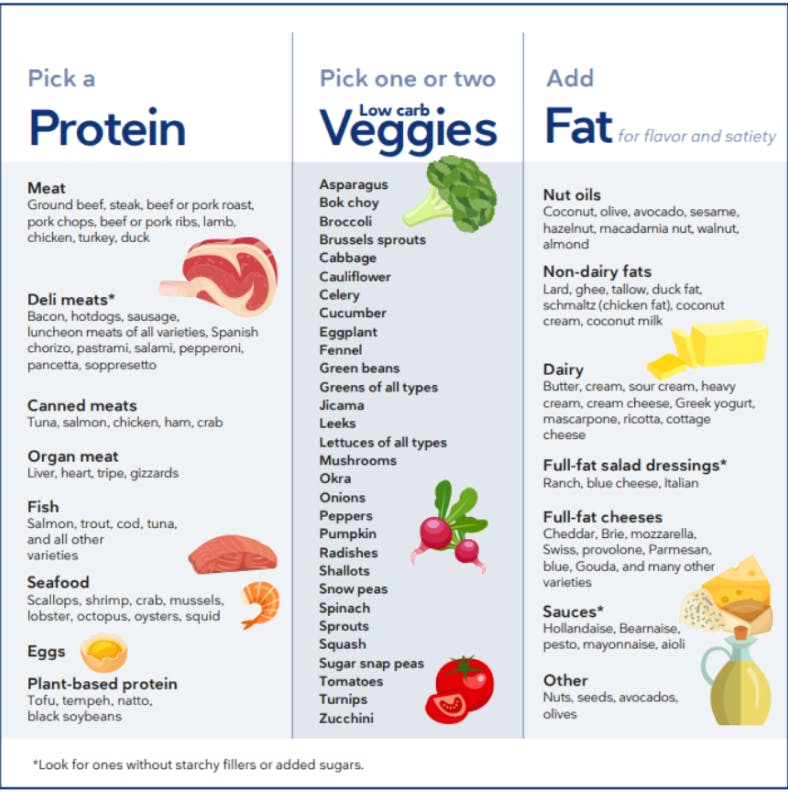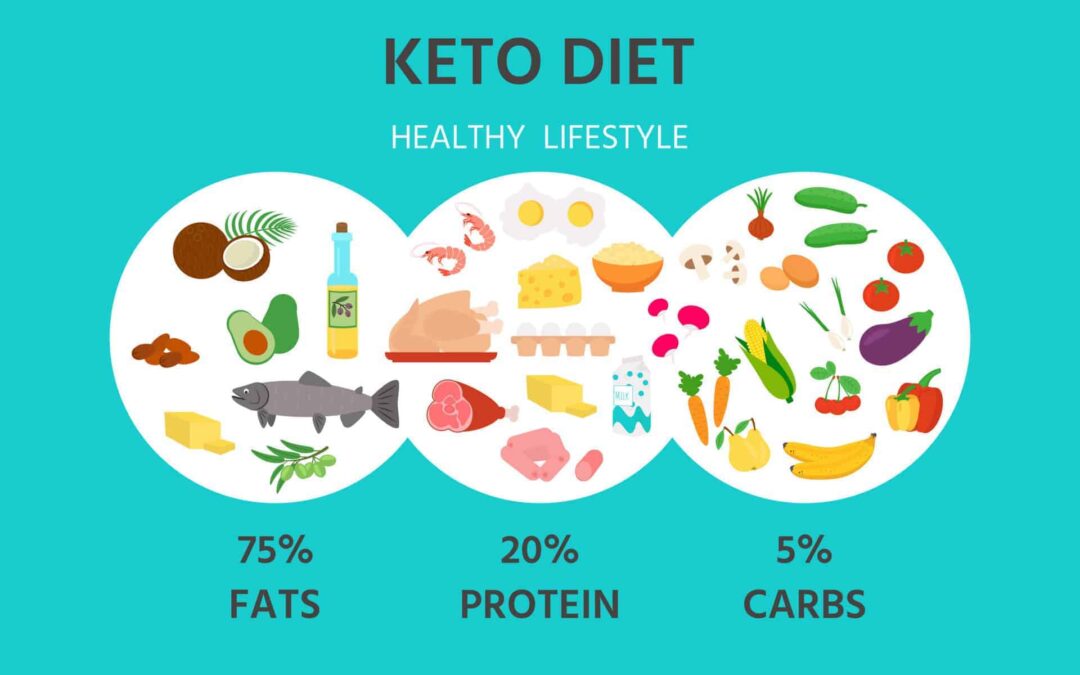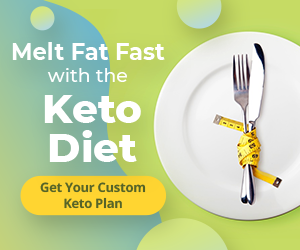Have you ever wondered what the keto diet is all about? Maybe you’ve heard the term before, but aren’t quite sure what it entails. Well, in this article, we’re going to break down the basics of the keto diet and explain how it may help you lose weight and improve your overall health. So, if you’re curious to learn more, keep on reading!
The keto diet, short for ketogenic diet, is a low-carb, high-fat eating plan that has gained popularity in recent years. The main goal of this diet is to get your body into a state of ketosis, where it starts burning fat for fuel instead of carbohydrates. By drastically reducing your carbohydrate intake and increasing your fat consumption, your body begins to produce ketones, which are molecules that serve as an alternative energy source. This shift in your body’s fuel source can have a variety of benefits, including weight loss, increased energy levels, and improved mental clarity.
In this article, we’ll dive deeper into how the keto diet works, what foods are allowed on the diet, and how to create a personalized keto diet plan that suits your lifestyle and goals. Whether you’re looking to shed a few pounds or simply want to improve your overall well-being, understanding the basics of the keto diet is a great place to start. So, let’s explore together and discover how this eating plan might be the key to achieving your health and weight loss goals!
What is the Keto Diet?
Definition of the Keto Diet
The Keto Diet, also known as the Ketogenic Diet, is a low-carbohydrate, high-fat diet that has gained popularity due to its potential for weight loss and health benefits. The diet aims to shift your body’s primary source of energy from carbohydrates to fat, leading to a state of ketosis.
How the Keto Diet Works
The Keto Diet works by drastically reducing carbohydrate intake and increasing fat intake. When you consume fewer carbohydrates, your body’s glycogen stores become depleted, and it needs to find an alternative fuel source. In the absence of carbohydrates, the liver starts to break down stored fat into ketone bodies, which are used as energy instead of glucose.
Benefits of the Keto Diet
The Keto Diet offers several potential benefits beyond weight loss. Some studies suggest that the diet may help improve insulin sensitivity and blood sugar control, making it suitable for those with diabetes or insulin resistance. Additionally, it may help reduce inflammation, improve brain function, and regulate hunger hormones, leading to increased satiety.
Potential Risks and Side Effects
While the Keto Diet has shown promise, it isn’t without potential risks and side effects. Some individuals may experience keto flu symptoms, including fatigue, nausea, irritability, and headaches, as the body adjusts to using ketones for fuel. Constipation and nutrient deficiencies can also occur if the diet is not properly balanced and supplemented.
Understanding Ketosis
Explanation of Ketosis
Ketosis is a metabolic state in which your body relies on ketones for energy instead of glucose. It occurs when carbohydrate intake is restricted, and stored fat is broken down into ketone bodies. In ketosis, your body becomes more efficient at burning fat, which can aid in weight loss.
How Ketosis Helps with Weight Loss
When in a state of ketosis, your body’s fat stores become more accessible as a fuel source. This can lead to weight loss, as your body burns fat for energy instead of relying on glucose from carbohydrates. Additionally, ketosis may help regulate appetite hormones, reduce cravings, and increase feelings of fullness, further supporting weight loss efforts.
Signs of Ketosis
There are several signs that indicate you are in ketosis, including increased energy, reduced hunger, mental clarity, and improved focus. Some individuals may also experience a sweet or fruity odor in their breath or urine due to the presence of ketones.
Measuring Ketone Levels
To determine if you are in ketosis, you can use various methods to measure your ketone levels. The most common methods include urine ketone strips, blood ketone meters, and breath acetone analyzers. These tools provide a quantifiable measure of ketone production and can help track your progress on the Keto Diet.
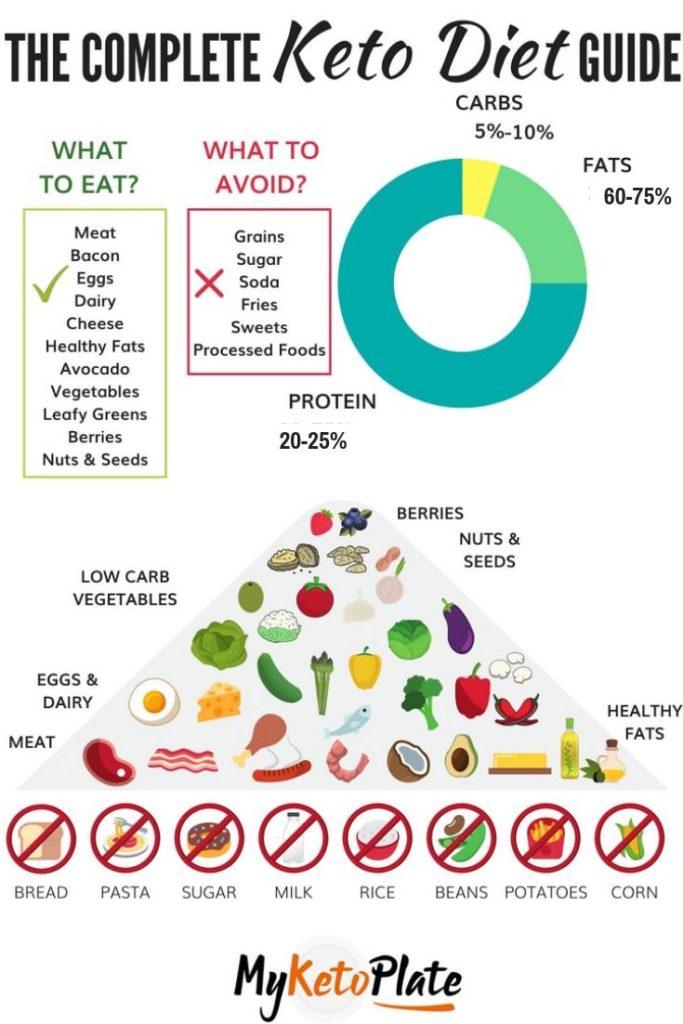
Key Principles of the Keto Diet
Carbohydrate Restriction
The primary principle of the Keto Diet is carbohydrate restriction. Typically, carbohydrate intake is limited to 20-50 grams per day, primarily coming from low-carb vegetables and small amounts of nuts and seeds. This restriction forces the body to enter ketosis and rely on fat for energy.
Increased Fat Intake
To compensate for reduced carbohydrate intake, the Keto Diet emphasizes increased fat consumption. Healthy fats such as avocados, nuts and seeds, coconut oil, olive oil, and fatty fish are encouraged. These fats provide the necessary fuel to support ketosis and help keep you feeling satiated.
Moderate Protein Consumption
Protein is an essential component of the Keto Diet, but it should be consumed in moderation. Consuming too much protein can potentially kick you out of ketosis, as excess protein can be converted into glucose through a process called gluconeogenesis. It is important to maintain a balance between fat and protein intake to optimize ketosis.
Importance of Nutrient Density
While the Keto Diet focuses on macronutrient ratios, it is crucial to prioritize nutrient-dense foods for overall health. Including a variety of low-carb vegetables, high-quality proteins, and healthy fats can provide essential vitamins, minerals, and antioxidants that support optimal health and well-being.
Foods to Eat on the Keto Diet
Healthy Fats
Healthy fats are a cornerstone of the Keto Diet. Include foods such as avocados, olive oil, coconut oil, butter, and fatty fish like salmon and mackerel. These fats not only provide fuel for ketosis but also offer important nutrients, including omega-3 fatty acids and vitamin E.
Low-Carb Vegetables
Choose non-starchy vegetables that are low in carbohydrates but high in fiber and nutrients. Examples include leafy greens, broccoli, cauliflower, zucchini, bell peppers, and Brussels sprouts. Incorporating these vegetables into your meals can add variety and essential vitamins to your diet.
Protein Sources
Opt for high-quality protein sources, such as lean meats, poultry, fish, and eggs. These foods provide essential amino acids for muscle repair and maintenance. Be mindful of the protein portions to avoid overconsumption and potentially hindering ketosis.
Dairy Products
Dairy products can be included in the Keto Diet, but opt for full-fat varieties and those with minimal added sugars. Examples include cheese, yogurt, and heavy cream. However, some individuals may need to limit dairy due to lactose intolerance or personal preference.
Nuts and Seeds
Nuts and seeds are a great source of healthy fats, fiber, and essential micronutrients. Include varieties such as almonds, walnuts, chia seeds, and flaxseeds in your diet. However, be mindful of portion sizes, as they can be calorie-dense.
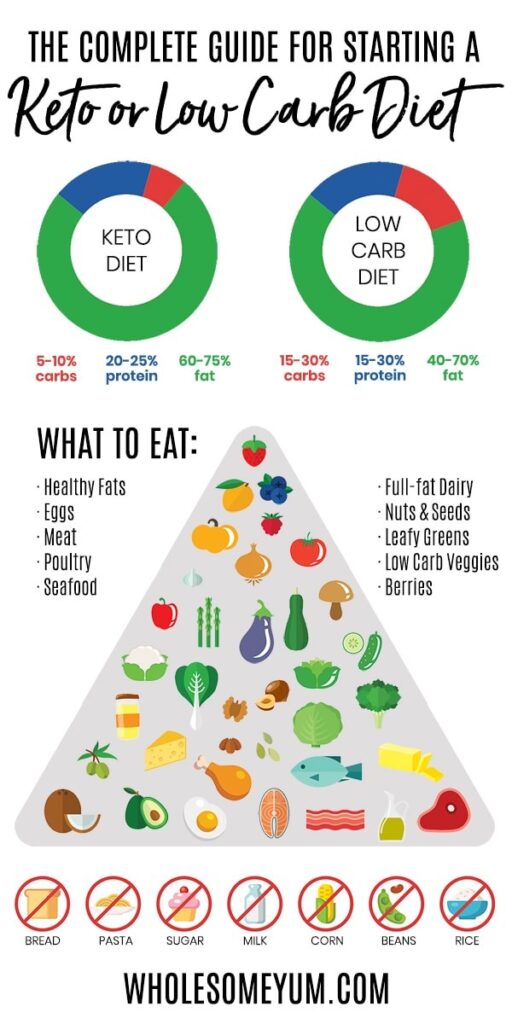
Foods to Avoid on the Keto Diet
High-Carb Foods
To achieve and maintain ketosis, it is important to avoid high-carb foods such as grains (bread, rice, pasta), sugar-laden snacks and desserts, sugary beverages, and legumes.
Sugar and Sweeteners
Minimize or eliminate added sugars and artificial sweeteners from your diet. This includes table sugar, honey, maple syrup, and most processed foods that contain hidden sugars.
Grains and Starchy Vegetables
Steer clear of grains such as wheat, rice, oats, and corn, as well as starchy vegetables like potatoes and sweet potatoes. These foods are high in carbohydrates and can hinder ketosis.
Processed Foods
Processed foods are often high in unhealthy fats, added sugars, and artificial ingredients. Avoiding these foods and focusing on whole, unprocessed foods will not only support ketosis but also promote overall well-being.
Fruit (in Moderation)
Fruits naturally contain sugar, primarily in the form of fructose. While some fruits can be included in moderation, it is important to choose lower-carb options such as berries and consume them in limited quantities to maintain ketosis.
Creating a Custom Keto Diet Plan
Determining Macronutrient Ratios
To create a custom keto diet plan, it is essential to determine your macronutrient ratios based on your individual needs and goals. Typically, a Keto Diet consists of 70-75% fat, 20-25% protein, and 5-10% carbohydrates. Consulting with a healthcare professional or registered dietitian can help you tailor these ratios to your specific needs.
Calculating Caloric Needs
Calculating your caloric needs is important to ensure you are consuming an appropriate amount of food to support your goals. Online calculators and consulting with a healthcare professional can help determine your daily caloric intake based on factors such as age, gender, activity level, and weight goals.
Meal Planning and Preparation
Meal planning and preparation are key to successfully following the Keto Diet. This involves identifying recipes, selecting appropriate foods, and organizing your meals and snacks for the week. Preparing meals in advance can help you stay on track and avoid making impulsive food choices.
Tracking Progress and Adjusting
Monitoring your progress and making adjustments to your custom keto diet plan is crucial for long-term success. Regularly tracking your body weight, measurements, ketone levels, and overall well-being can help you understand how your body responds to the diet. Based on your results, you can adjust your caloric intake or macronutrient ratios as needed.
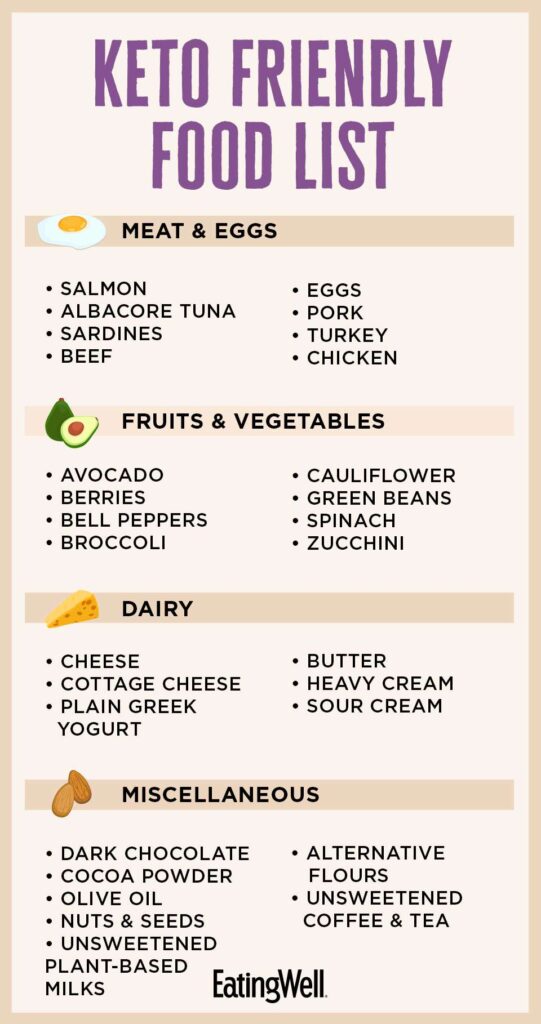
Common Misconceptions about the Keto Diet
Ketoacidosis vs. Ketosis
One common misconception is confusing ketoacidosis with ketosis. Ketoacidosis is a dangerous condition primarily seen in individuals with type 1 diabetes, where blood ketone levels become dangerously high and blood pH drops. Ketosis, on the other hand, is a natural metabolic process that occurs in healthy individuals following a well-formulated Keto Diet.
Sustainability of the Keto Diet
There may also be concerns about the long-term sustainability of the Keto Diet. While it may be challenging for some individuals to follow the diet strictly for an extended period, there are variations and flexible approaches that can be adopted to make it more sustainable. Experimenting with different foods and recipes can help keep the diet interesting and enjoyable.
Stigmatization of High-Fat Diets
High-fat diets, including the Keto Diet, have often been stigmatized due to the association between dietary fat and heart disease. However, emerging research suggests that low-carbohydrate diets can be effective for weight loss and may not adversely affect heart health when paired with high-quality fats and nutrient-dense foods.
Long-Term Health Effects
While the Keto Diet has shown promising results in weight loss and certain health markers, more research is needed to determine the long-term effects on various health parameters. As with any dietary approach, it is important to focus on whole, nutrient-dense foods and consider the individual’s unique needs and medical history.
Managing Side Effects of the Keto Diet
Keto Flu
The keto flu is a common side effect experienced by some individuals as their body transitions into ketosis. Symptoms may include fatigue, headaches, irritability, and nausea. Staying hydrated, consuming adequate electrolytes, and gradually reducing carbohydrate intake can help minimize these symptoms.
Electrolyte Imbalance
As carbohydrate intake decreases, electrolyte imbalances can occur. It is crucial to maintain adequate sodium, potassium, and magnesium levels to prevent muscle cramps, fatigue, and weakness. Consuming electrolyte-rich foods and considering supplementation can help balance electrolytes on the Keto Diet.
Digestive Issues
Some individuals may experience digestive issues when transitioning to the Keto Diet, such as constipation or diarrhea. Increasing fiber intake from low-carb vegetables, staying hydrated, and consuming healthy fats can help regulate digestion. If these issues persist, consulting a healthcare professional is advisable.
Potential for Nutrient Deficiencies
Since the Keto Diet restricts certain food groups, there is a risk of nutrient deficiencies if the diet is not properly planned and balanced. Ensuring a wide variety of nutrient-dense foods, considering appropriate supplementation, and consulting with a registered dietitian can help minimize the potential for nutrient deficiencies.
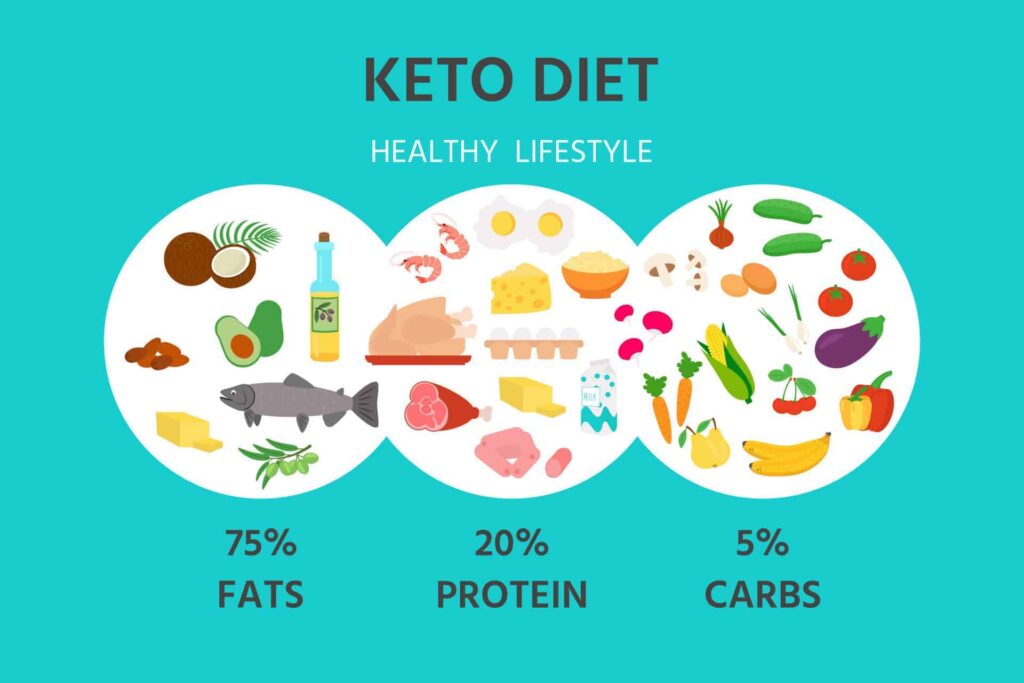
Combining the Keto Diet with Exercise
Benefits of Exercise on the Keto Diet
Regular exercise can offer numerous benefits when combined with the Keto Diet. Exercise can enhance fat burning, improve insulin sensitivity, support muscle maintenance, and promote overall cardiovascular and mental health. It is important to find a balance between exercise intensity, duration, and nutritional needs while following the Keto Diet.
Types of Exercises to Consider
Incorporating a combination of cardiovascular exercises, such as walking, running, or cycling, with strength training can be beneficial on the Keto Diet. Strength training helps maintain lean muscle mass, which is important for a healthy metabolism. Engaging in activities you enjoy will increase adherence and overall wellbeing.
Timing of Exercise and Carb Intake
Timing exercise around carbohydrate intake can help optimize performance and recovery on the Keto Diet. Consuming a small amount of carbohydrates before or after workouts, such as from low-carb fruits or sports drinks, can provide additional energy for intense activities. However, individual experimentation and listening to your body’s needs are key.
Conclusion
Summary of the Keto Diet Basics
The Keto Diet is a low-carbohydrate, high-fat diet that can aid in weight loss and potentially offer numerous health benefits. By shifting your body into a state of ketosis, you enter a metabolic state in which you burn fat for fuel instead of carbohydrates.
Importance of Individualized Approach
It is crucial to approach the Keto Diet with an individualized mindset, considering your unique needs, goals, and health history. Consulting with a healthcare professional or registered dietitian can help you create a custom keto diet plan that meets your specific requirements.
Long-Term Sustainability and Health Considerations
While the Keto Diet has gained popularity, it is important to consider the long-term sustainability and potential health effects. Focusing on nutrient-dense foods, monitoring progress, and listening to your body’s needs can help you create a balanced approach to the Keto Diet that supports your long-term well-being.
Understanding the basics of the Keto Diet can empower you to make informed decisions about your dietary choices. Remember, the key to success lies in finding a balance that suits your lifestyle, preferences, and overall health. By combining a custom keto diet plan with regular exercise and a focus on nutrient-dense foods, you can optimize your weight loss journey and improve your overall health.
